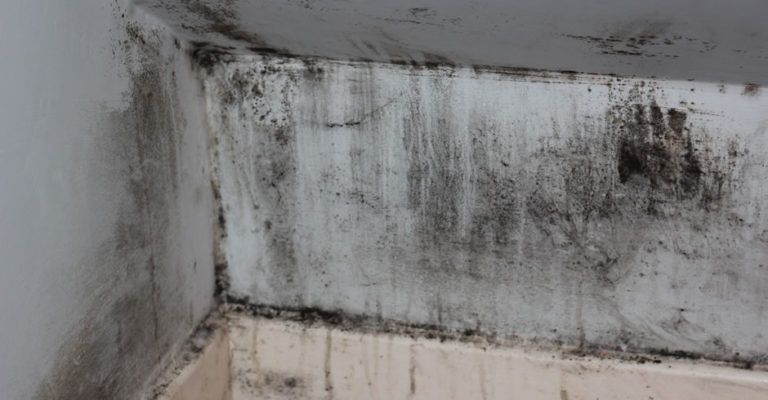Mould problems in your home should be dealt with as soon as possible. Black mould is not just unsightly but is a serious potential health risk!
Mould produces substances that can cause an allergic reaction (allergens) and these increase the risk of respiratory infections, asthma and/or allergies. Babies & children, the elderly and sufferers of asthma and eczema are most at risk. But just how do you deal with mould problems in your home?
- The first course of action required is to directly tackle the mould, which means thoroughly cleaning the affected area. Harsh chemicals or disinfectants are not necessary. Simply wash the walls and surfaces with soapy water. Detergents such as washing up liquid or hand laundry powder will do the job just fine.
- If you are concerned that washing up liquid or mild detergents may not be strong enough then feel free to use a specialist mould removal spray. Just make sure that you follow the instructions on the container. Make sure you keep doors closed as the mould spores can become airborne once you start cleaning.
- If the mould or mildew has contaminated clothes or soft furnishings they should be removed and cleaned. You may have to consider replacing items such mattresses or soft furniture that has been badly contaminated.
- Wipe down walls and surfaces with your soapy water or your specialist mould removal product. Use a sponge or rag then dry off with another disposable cloth. Dispose of the cleaning and drying rags in a plastic bag to avoid further contamination.
- After removing all visible mould, vacuum clean the affected area, preferably use a machine fitted with a High Efficiency Particulate Air (HEPA) filter which will capture the spores that will inevitably be in the room. During and after the cleaning process keep the area well ventilated, open the windows and allow all surfaces and walls to dry thoroughly.
Repeat this process for every room you have that has mould and be sure to throw away your disposable cloths each time so as not to spread the mould.
Once you are happy that there is no re-occurrence, you can apply anti-mildew paint on any affected walls.
Now for the Mould Prevention
Now that you have tackled the mould you need to turn your attention to stop it from returning. Mould thrives in a damp and humid environment and there are a number of causes of excessive humidityin a room or building that need to be considered but essentially they fall into two categories.
- Firstly, is there a build up of condensation? Most of these can be tackled and resolved quite simply. See our article about ways to reduce condensation in your property. Short-term mould prevention can be achieved with an electric dehumidifier which you can purchase for a reasonable price from a local DIY store.
- Secondly, is there an underlying issue of rising or penetrating damp?
If rising damp is the cause of your mould problem then all of the above will help deal with the symptoms but you will need some expert help with the underlying rising damp problem.
Excessive moisture in your walls can also have a number of causes but these are best assessed by a Schrijver Damp Specialist who can evaluate and recommend appropriate action. The Schrijver System is designed to help your walls to breath and so dissipate moisture in a natural way, ventilating and damp proofing walls. For more information, see how the Dutch Damp Proofing System works.
The Schrijver System reduces moisture from external walls and is guaranteed for life. No harmful chemicals are involved, just natural airflow processes that reduce moisture levels in the external brickwork. The work is undertaken from outside the property not inside and is more cost effective than traditional damp proofing methods, saving money on costly redecorating and replastering.
For a healthier and more comfortable house deal with mould problems in your home right away and for further advice get in touch with a helpful Schrijver Specialist, call 01689 800101

